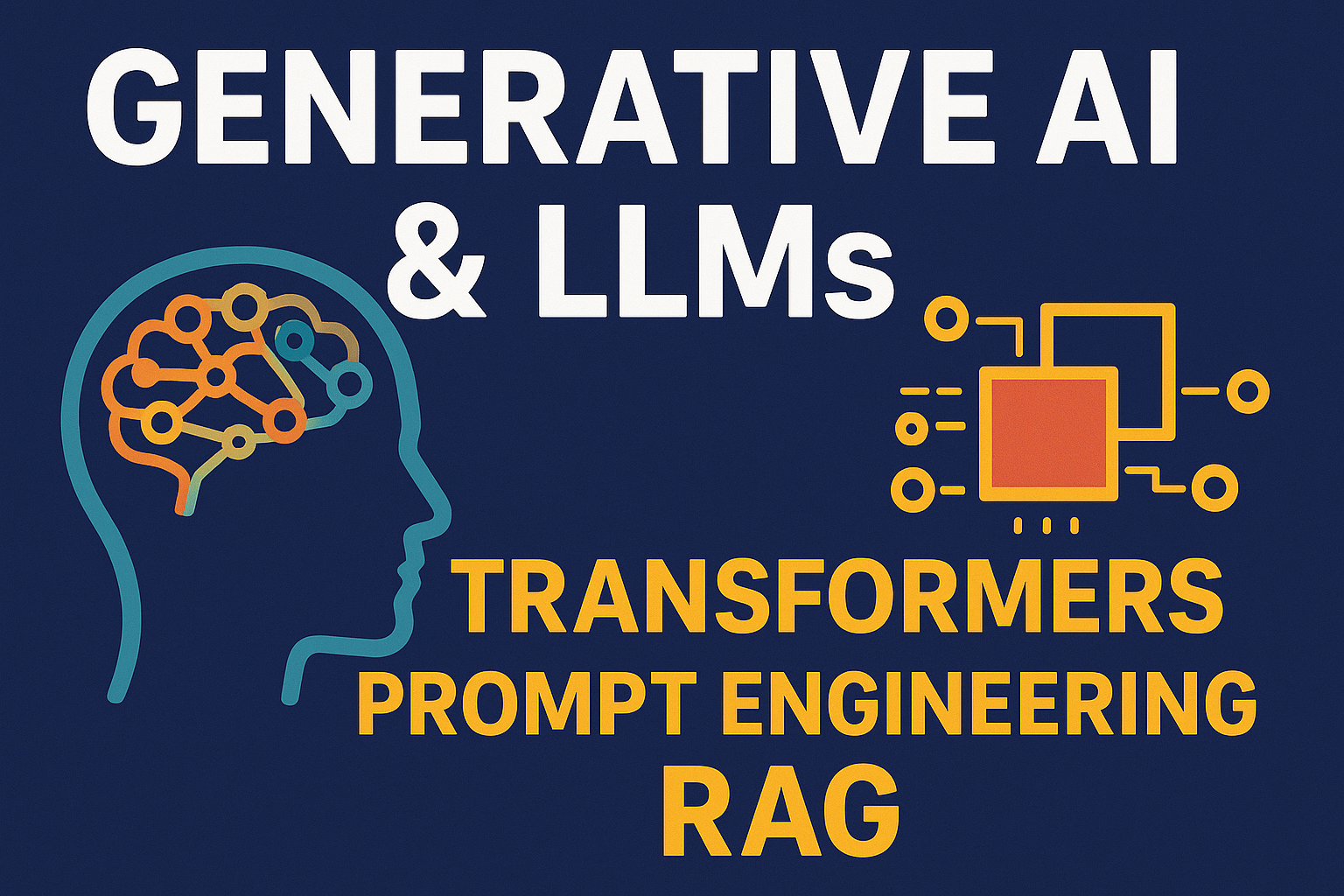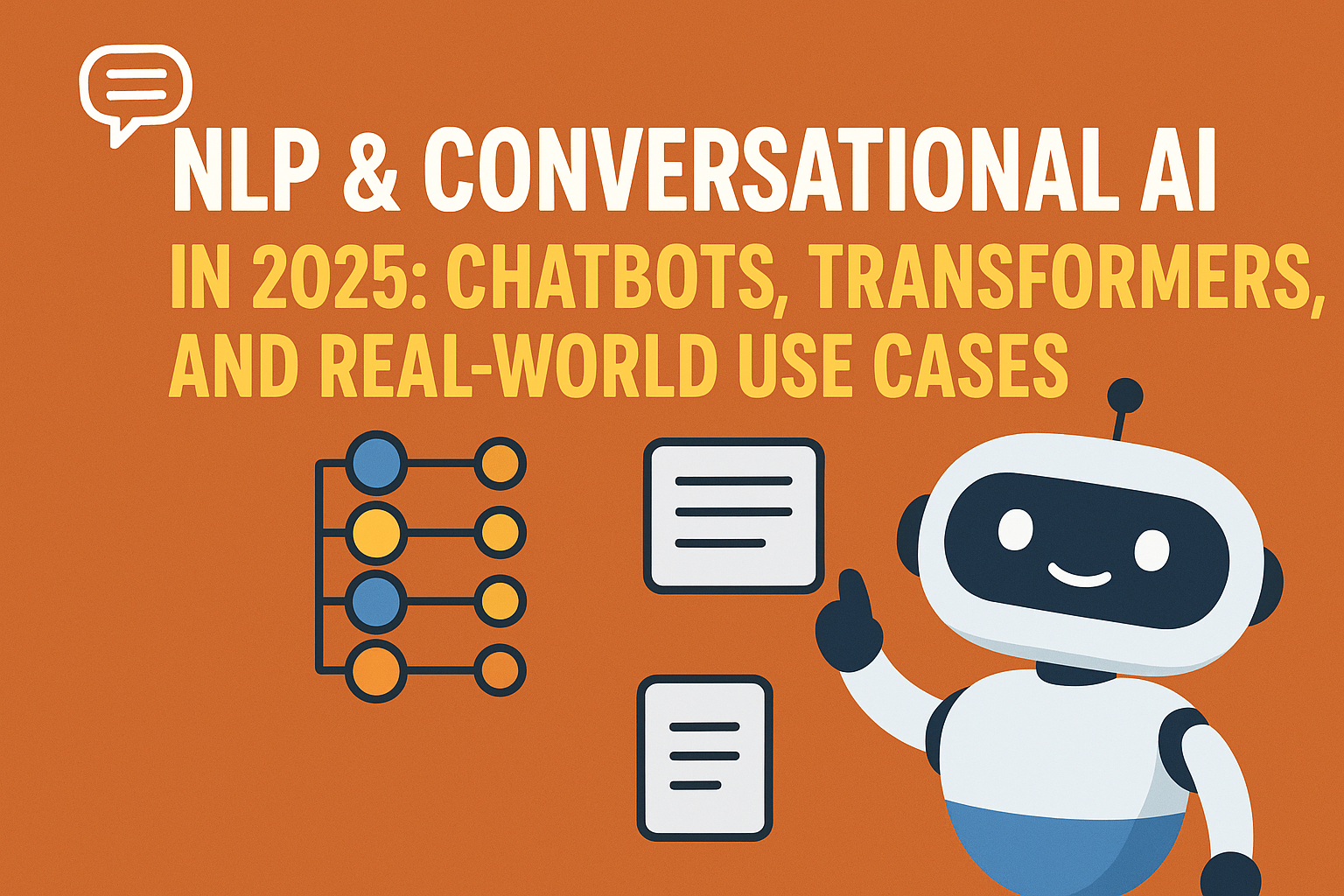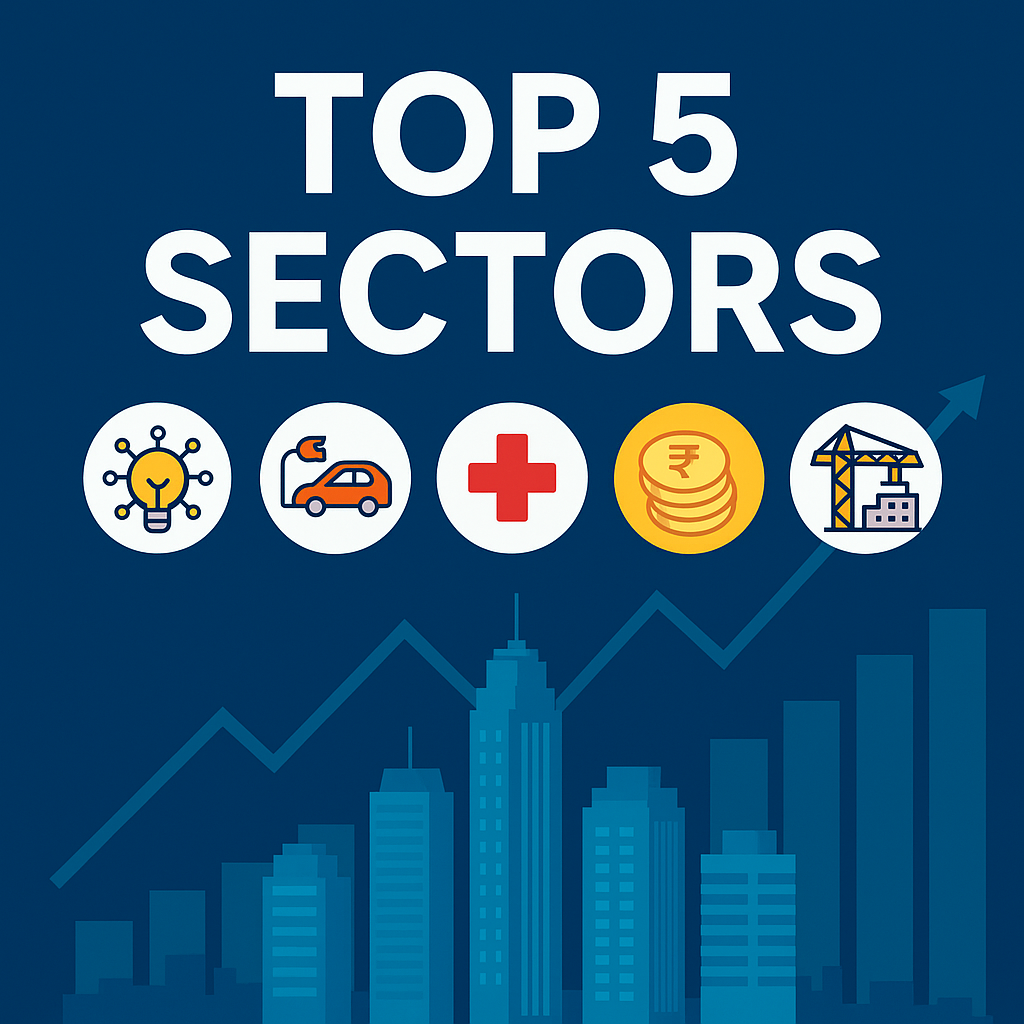In 2025, Generative AI and Large Language Models (LLMs) are changing the tech world. Generative AI can make new content like text, images, and music. It does this based on what users ask for.

The Transformer architecture is a big part of LLMs. It helps them understand and create language like humans. Knowing how these technologies work is key to using them well.
Key Takeaways
- Generative AI produces original content based on user prompts.
- LLMs rely on Transformer architecture for language processing.
- Prompt engineering is essential for effective LLM interaction.
- RAG enhances LLM capabilities by integrating external knowledge.
- Ethical considerations, such as bias and copyright, are critical.
The Evolution of Generative AI and Large Language Models
Generative AI has seen big changes, moving from simple rules to complex neural networks. This change helped create large language models. These models are key in AI research today.
From Rule-Based Systems to Neural Networks
The start of generative AI was with rule-based systems. These systems used set rules to create text or answers. But, they struggled to grasp language’s subtleties and context.
The move to neural networks changed everything. These models learn from lots of data. This led to better quality and more coherent text.
| Characteristics | Rule-Based Systems | Neural Networks |
|---|---|---|
| Learning Mechanism | Predefined rules | Data-driven learning |
| Contextual Understanding | Limited | Advanced |
| Flexibility | Low | High |
The Breakthrough of Large Language Models
Large language models, like those using the Transformer architecture, have set new standards in natural language tasks. They can understand and create text that sounds like it was written by a human. This opens doors for chatbots, content creation, and more.
The success of these models comes from better pre-training techniques and more computing power. This lets them learn language’s complex patterns. As a result, they give more accurate and helpful answers.
Understanding Transformer Architecture: The Foundation of Modern AI
The transformer architecture is at the core of modern AI. It has changed how machines understand and create human language. This change has led to the creation of large language models that work well and efficiently.
Attention Mechanisms Explained
The transformer architecture uses attention mechanisms. These mechanisms let the model focus on various parts of the input sequence at once. They also decide how important each part is. This is different from traditional RNNs, which process sequences one by one.
Attention mechanisms are key to understanding how transformers handle language. They help the model grasp long-range connections and relationships in the input data.

Self-Attention and Parallel Processing
The transformer architecture’s innovation is self-attention. It lets the model look at different parts of the input sequence all at once. This is great for tasks that need to understand complex data relationships.
Transformers also process input sequences in parallel, unlike traditional sequential processing. This makes them more efficient and scalable.
How Transformers Process Language
Transformers break down input sequences into smaller parts, like tokens or subwords. They then use self-attention mechanisms to analyze these parts. This way, the model can understand language’s nuances, including syntax, semantics, and context.
| Component | Function |
|---|---|
| Self-Attention | Captures dependencies within the input sequence |
| Encoder | Processes input sequences into continuous representations |
| Decoder | Generates output sequences based on the encoded representations |
The transformer architecture is the base for many top language models. It has led to big steps forward in natural language processing and generation.
Generative AI Large Language Models (LLMs): Transformer Architecture and Capabilities
Large Language Models (LLMs) are key in Generative AI. Their transformer architecture is a big reason for their success.
Pre-training and Fine-tuning Processes
LLMs start by learning from huge amounts of text. This lets them understand language patterns. Then, they’re fine-tuned for specific tasks.
Pre-training gives them a broad language understanding. Fine-tuning makes them better at certain tasks. This two-step process is vital for their effectiveness.
Scaling Laws and Model Size
Scaling laws show how better LLMs get with more size and data. Bigger models usually do better, but there’s a limit.
Knowing these laws helps decide the best size for LLMs. It’s about finding the right balance between performance and cost. As models get bigger, managing costs gets harder.
From GPT-4 to GPT-5: Evolution in 2025
GPT-5 will be a big leap from GPT-4. It will have better performance and larger size. It might also have new features.
The move to GPT-5 will improve pre-training and fine-tuning. It will also make bigger models more efficient. As LLMs grow, we’ll see new uses in many fields.
The Art and Science of Prompt Engineering for LLMs
Prompt engineering is key to unlocking Large Language Models (LLMs) in 2025. How we interact with LLMs through prompts greatly affects their performance. This interaction is vital for their success.

Fundamentals of Effective Prompting
Effective prompting is both an art and a science. It’s about knowing what LLMs can do and what they can’t. Then, we craft prompts that get the right answers.
To do this, we focus on making prompts clear and specific. This clarity and specificity are essential.
- Be clear and concise in your prompt to avoid ambiguity.
- Use specific language and define any necessary context or background information.
- Experiment with different prompt structures to find what works best for your specific use case.
Advanced Prompt Techniques for Different Use Cases
LLMs are used in many ways, each needing its own approach to prompt engineering. For example, in creative writing, prompts aim to spark imagination. On the other hand, technical documentation needs precise and formal prompts.
Some advanced techniques include:
- Using chain-of-thought prompting to guide the model through a logical sequence of reasoning.
- Employing few-shot learning to provide the model with examples that help it understand the task better.
- Leveraging role-based prompting to tailor the response based on a specific persona or role.
Chain-of-Thought and Few-Shot Learning
Chain-of-thought prompting makes the model explain its reasoning. This is great for solving complex problems. It helps us see how the model thinks.
Few-shot learning gives the model a few examples to learn from. This way, it can tackle new tasks it hasn’t seen before.
By using these advanced techniques, developers can make LLMs better at many tasks. This includes customer support and content generation.
Retrieval-Augmented Generation (RAG): Enhancing LLM Accuracy and Reducing Hallucinations
The use of Retrieval-Augmented Generation (RAG) in LLMs is a big step forward in AI. It helps LLMs understand context better and reduces bias. RAG systems make LLMs more accurate by using external knowledge. This cuts down on mistakes and makes AI content more reliable.
How RAG Systems Work
RAG systems mix neural retrieval models with LLMs’ generative power. When you input a query, the system searches for relevant info in a knowledge base. This info is then used to improve the LLM’s response, making it more accurate and relevant.
The steps are:
- Query encoding: The query is turned into a dense representation.
- Document retrieval: Relevant documents are found based on their similarity to the query.
- Document reranking: The found documents are ranked again for relevance.
- Response generation: The LLM creates a response using the query and documents.
Vector Databases and Semantic Search
Vector databases are key in RAG systems for fast semantic search. They store text as dense vectors, making it easy to find relevant info. This allows RAG systems to handle large knowledge bases efficiently.
Semantic search works because of dense vector representations. They capture the meaning of queries and documents. This means the system can find relevant documents, even without exact keywords.
Measuring RAG Performance and Quality
Assessing RAG systems looks at retrieval and generation quality. Precision, recall, and F1 score measure retrieval. Perplexity and BLEU score check the generated responses.
Important factors include:
- The accuracy and relevance of retrieved documents.
- The quality and coherence of generated responses.
- The system’s ability to provide accurate and relevant info.
By focusing on these, developers can improve RAG systems. This leads to more reliable and trustworthy AI content.
Practical Implementation Guide: Building RAG Applications in 2025
To build effective RAG applications in 2025, you need to understand setting up a knowledge base, designing a retrieval system, and integrating with LLMs. As AI technologies become more common, the need for advanced RAG systems grows.
Setting Up the Knowledge Base
The knowledge base is key to any RAG application. It collects, processes, and stores information for the LLM to use. This information helps the LLM give accurate and relevant answers.
- Identify relevant data sources: Find the documents, databases, or data repositories to use for the knowledge base.
- Data preprocessing: Clean and prepare the data for the RAG system.
- Storage solutions: Pick storage solutions, like vector databases, for efficient data handling and search.
“A well-structured knowledge base is vital for RAG applications,” says Dr. Jane Smith, AI Researcher. “It helps the system find information fast and accurately, boosting the LLM’s performance.”

Designing the Retrieval System
The retrieval system fetches information from the knowledge base based on the query. A good retrieval system is key to the RAG application’s success.
- Choose a suitable retrieval algorithm: Pick an algorithm that efficiently searches the knowledge base.
- Implement semantic search: Use vector embeddings for semantic search to understand the query’s context and intent.
- Optimize retrieval parameters: Adjust the parameters to find relevant information without being too specific or broad.
Efficient retrieval systems are the backbone of successful RAG applications. They ensure the LLM gets the most relevant information, improving response accuracy and reliability.
Integrating with LLMs for Generation
The last step is integrating the retrieval system with an LLM to generate responses. This uses the retrieved information to guide the LLM’s generation.
- Choose an appropriate LLM: Pick an LLM that works well with the RAG system and uses the retrieved information effectively.
- Fine-tune the LLM: Adjust the LLM for the specific task or domain to enhance its performance and response quality.
- Monitor and evaluate performance: Keep checking the RAG application’s performance and make adjustments as needed.
By following these steps, developers can create strong RAG applications that use LLMs to generate top-notch responses. Experts say, “The integration of RAG systems with LLMs is a big step forward in AI technology, leading to more accurate and helpful responses.”
Ethical Considerations in Generative AI Development
Ethical issues are key in making generative AI. As these models get smarter, we must tackle the ethical hurdles they bring. This ensures they are used safely and for good.
Bias Detection and Mitigation Strategies
Bias is a big worry in generative AI. It can sneak in during data collection, training, or design. Bias detection finds and measures these biases. Mitigation strategies work to lessen or get rid of them.
To spot bias, developers look at how different groups are treated. After finding bias, they use methods like cleaning data or training models to resist bias.
| Bias Mitigation Technique | Description | Effectiveness |
|---|---|---|
| Data Preprocessing | Removing biased data before training | High |
| Adversarial Training | Training the model to be robust against biased inputs | Medium |
| Regular Auditing | Regularly checking the model for bias | High |
Privacy Concerns and Data Protection
Generative AI needs lots of data to learn. This creates big privacy concerns because personal info might be stored. Keeping data safe is key to avoid leaks and keep users’ trust.
Tools like differential privacy help protect personal info. Also, making data anonymous and storing it securely are vital steps.
Transparency and Explainability Requirements
Transparency means we can see how AI models work and decide. Explainability means we can understand their choices in a way we can grasp.
Methods like model interpretability and model-agnostic explanations help make AI clearer. This builds trust and ensures AI is accountable.
By focusing on these ethical points, we can make sure generative AI is developed and used responsibly and for the better.
Copyright and Content Authenticity in the Age of AI
AI is now a big part of making content, raising questions about copyright, attribution, and ownership.
The legal world is getting more complex. Many people want clear answers on these topics. As AI-generated content grows, courts and lawmakers are trying to figure out how to handle it.
Legal Landscape for AI-Generated Content in 2025
In 2025, the legal scene for AI-generated content has changed a lot. Courts are dealing with cases that question old copyright laws. These laws were made for human creators.
Legal expert Pamela Samuelson says, “The copyright law has not yet caught up with the technology.”
“The challenge is to balance the need to protect creative works with the need to allow for the development of new technologies.”

Attribution and Ownership Issues
One big problem is figuring out attribution and ownership. Should the copyright for AI-generated content go to the human who programmed it, the AI itself, or the user who gave it data?
- The human who designed the AI algorithm
- The user who input the data that led to the generated content
- The AI system itself, as it is the direct creator of the content
Each option has its own legal and ethical issues.
Recent Legal Precedents in India and Globally
Recent court decisions are starting to show how judges are thinking about these issues. In India, for example, there have been cases that test copyright law with AI-generated content.
| Country | Legal Precedent | Implication |
|---|---|---|
| India | Case XYZ | Established that AI-generated content can be copyrighted, with ownership attributed to the AI’s creator |
| USA | Case ABC | Ruled that AI-generated content cannot be copyrighted, as it lacks human authorship |
These cases show the ongoing debate. They highlight the need for clearer rules on copyright and content authenticity in the AI era.
Generative AI Use Cases in India: 2025 Landscape
India is embracing Generative AI in many areas, like healthcare, education, and customer support. Its diverse economy and large population make it perfect for AI innovations.
Healthcare and Biomedical Applications
Generative AI is changing healthcare in India. It makes diagnoses more accurate, tailors treatments, and makes clinical work easier. For example, AI chatbots can give initial diagnoses and suggest tests or visits.
Key Applications:
- Medical Imaging Analysis: AI looks at medical images to spot issues.
- Drug Discovery: AI speeds up finding new drugs by predicting molecular structures.
- Personalized Medicine: AI makes treatment plans fit each patient’s needs.
Apollo Hospitals and Microsoft are working together. They use Generative AI to analyze images and predict patient results.
Education and Knowledge Management
Generative AI is making education better in India. It creates learning plans just for each student, grades work, and makes learning materials that adapt. AI looks at how students do and suggests the best learning paths.
| Application | Description | Benefit |
|---|---|---|
| Personalized Learning | AI-driven adaptive learning systems | Improved student outcomes |
| Automated Grading | AI-powered grading systems | Reduced teacher workload |
| Content Creation | AI-generated educational content | Enhanced learning materials |
Customer Support and Business Operations
Generative AI is changing customer support in India. It lets businesses offer 24/7 help through AI chatbots and virtual assistants. These systems can handle tough questions, give personalized advice, and send complex issues to humans.
Benefits:
- Enhanced Customer Experience: AI support systems answer faster and more accurately.
- Operational Efficiency: Handling simple questions frees up human agents for more complex tasks.
- Cost Savings: Fewer customer support staff are needed.
TCS and Infosys are using Generative AI to improve their customer support. They offer more efficient and personalized service.
Open-Source Tools and Frameworks for LLMs and RAG Systems
Open-source tools and frameworks are key in the growth of LLMs and RAG systems. The open-source community has made big strides in making these technologies more accessible. They’ve created innovative solutions that help speed up their adoption.

Popular Open-Source LLMs in 2025
In 2025, some open-source LLMs stand out for their performance and community backing. These include:
- LLaMA: Known for its efficiency and scalability.
- BERT: Continues to be a popular choice for natural language understanding tasks.
- OPT: Offers a range of model sizes, making it versatile for different applications.
These models are used in many areas, like chatbots and content creation. They are essential for many AI projects.
RAG Frameworks and Libraries
RAG systems have seen a lot of progress thanks to open-source frameworks. Some key ones are:
- Faiss: A library for efficient similarity search and clustering.
- Annoy: Provides efficient nearest neighbor search capabilities.
- Hnswlib: Offers high-performance approximate nearest neighbor search.
These libraries are vital for building scalable RAG systems. They help handle large datasets and give accurate results.
Deployment and Scaling Solutions for Indian Businesses
Indian businesses face challenges in deploying and scaling LLMs and RAG systems. They need to think about infrastructure and cost. Some strategies include:
- Utilizing cloud services that offer scalable infrastructure.
- Implementing containerization using tools like Docker.
- Leveraging orchestration tools like Kubernetes for efficient management.
By using these strategies, Indian businesses can deploy and scale their AI solutions. This helps them stay competitive in a fast-changing market.
Optimizing Content for AI Search Engines: Generative Engine Optimization
Generative Engine Optimization (GEO) is becoming key for better content visibility in AI search results. As AI changes how we find information, knowing GEO is vital for businesses and creators.
GEO Principles and Best Practices
GEO makes content easy for AI search engines to find and understand. It’s about knowing how AI algorithms work and rank content. Key principles include:
- Clear Structure: Organizing content in a logical and easily parseable format.
- Relevant Metadata: Using metadata to give context and relevance to AI algorithms.
- Entity-Based Content: Focusing on entities and their relationships to make content richer.
Structuring Content for AI Discoverability
To make content easy for AI to find, it must be structured well for both users and algorithms. This means:
- Using header tags (H1, H2, H3) to create a clear structure.
- Adding schema markup for extra context.
- Making content concise but covering all topic aspects.
| Content Structuring Element | Purpose | Example |
|---|---|---|
| Header Tags | Create hierarchical structure | H1: Main Topic, H2: Subtopics |
| Schema Markup | Provide additional context | JSON-LD for events, reviews |
| Concise Content | Cover topics comprehensively | Detailed guides, FAQs |
By following these GEO principles and structuring content for AI, businesses can boost their online presence. They can also reach their audience more effectively.
The Future of Generative AI in India and Globally: 2025 and Beyond
2025 is a big year for Generative AI. New research and industry trends will start in India and worldwide. It’s important to know what’s driving these changes.
Emerging Research Directions from Indian Institutions
Indian institutions are leading in Generative AI research. They are exploring new areas like natural language processing and computer vision. This research is getting more attention.
Some key research areas include:
- Developing more efficient transformer architectures
- Improving the accuracy of LLMs for Indian languages
- Exploring applications of Generative AI in healthcare and education

Industry Adoption Trends in the Indian Market
The Indian market is quickly adopting Generative AI. It’s making a big difference in customer support and content generation.
| Industry | Adoption Trend | Key Application |
|---|---|---|
| Customer Support | High | Chatbots and Virtual Assistants |
| Content Generation | Moderate | Automated Content Creation |
| Healthcare | Emerging | Medical Diagnosis and Research |
Regulatory Developments in AI Governance
As Generative AI grows, rules are being made to use it safely and ethically. Focus is on data privacy and avoiding bias.
Some key developments include:
- Guidelines for ethical AI use
- Steps to prevent AI bias
- Transparency in AI decisions
In conclusion, the future of Generative AI looks bright. We can expect big steps in research, adoption, and rules.
Conclusion: Navigating the Generative AI Revolution
The Generative AI revolution is changing how industries work and businesses operate. We’ve learned a lot about Generative AI in this article. It’s key to understanding it to stay ahead.
Large Language Models (LLMs) and Retrieval-Augmented Generation (RAG) are important. So is prompt engineering. These are driving the revolution. As we look to 2025 and beyond, Generative AI will keep shaping the future.
India and the world need to keep up with the Generative AI revolution. Knowing the latest news, challenges, and chances is vital. This way, we can use Generative AI to innovate, work better, and find new ways to grow.
FAQ
How do transformer models power generative AI?
Transformer models are key to generative AI. They handle sequential data like text efficiently. This leads to better performance in tasks like translation and text creation.
What is prompt engineering in large language models?
Prompt engineering is about making input prompts better. It helps get accurate and relevant responses from models. It’s about knowing what the model can do and understanding language well.
What are the best practices for retrieval-augmented generation (RAG)?
For RAG, start with a strong knowledge base. Then, design a good retrieval system. Use large language models for generation. Always check the quality and accuracy of the content.
What are the ethical challenges of generative AI in 2025?
In 2025, generative AI faces big ethical hurdles. These include dealing with bias, privacy, and making sure AI is transparent. It’s vital to tackle these issues for responsible AI use.
How can bias be reduced in large language models?
To lessen bias in LLMs, use data curation and debiasing algorithms. Also, try adversarial training. Regular audits help spot and fix bias in these models.
What are the copyright risks of generative AI content?
Generative AI content raises copyright concerns. Issues like ownership and infringement are common. It’s important to understand the legal side of AI-generated content well.
What is the difference between LLMs and traditional AI models?
LLMs are unique because they can understand and create human-like language. They use transformer architecture and lots of training data. This lets them do tasks like text generation and conversation.
What are the applications of generative AI in India in 2025?
In 2025, generative AI will be used in many areas in India. This includes healthcare, education, and business. It will help drive innovation and improve services.
What are the regulatory developments in AI governance?
AI governance is getting more rules and standards. Governments aim to address bias, privacy, and transparency issues. They want to ensure AI is developed responsibly.
How can businesses deploy and scale LLMs and RAG systems?
Businesses can use open-source tools and cloud services to deploy LLMs and RAG. This helps them use generative AI for innovation.
What is Generative Engine Optimization (GEO)?
GEO is about making content better for AI search engines. It helps businesses get seen more in AI searches. It’s about understanding AI algorithms and structuring content right.
What are the emerging research directions in generative AI?
New research in generative AI includes explainable AI and multimodal learning. It also looks at how humans and AI can work together. This research is pushing the field forward.



![AI Tools for Social Media Creators: Instagram, TikTok & LinkedIn [2025]](https://niftynautanki.com/wp-content/uploads/2025/09/AI-009-360x180.png)


![AI Writing Tools Compared: ChatGPT vs Jasper vs Writesonic [2025]](https://niftynautanki.com/wp-content/uploads/2025/09/img-00998-360x180.png)



